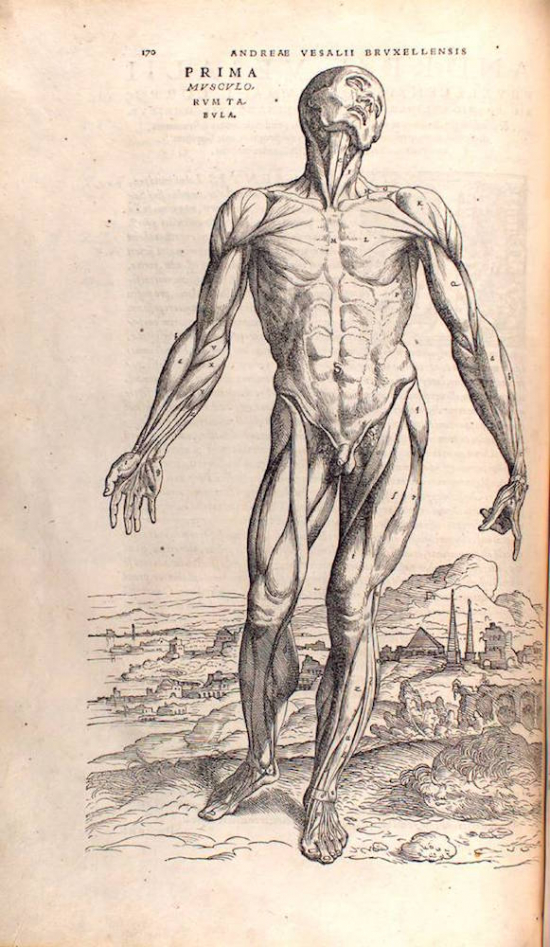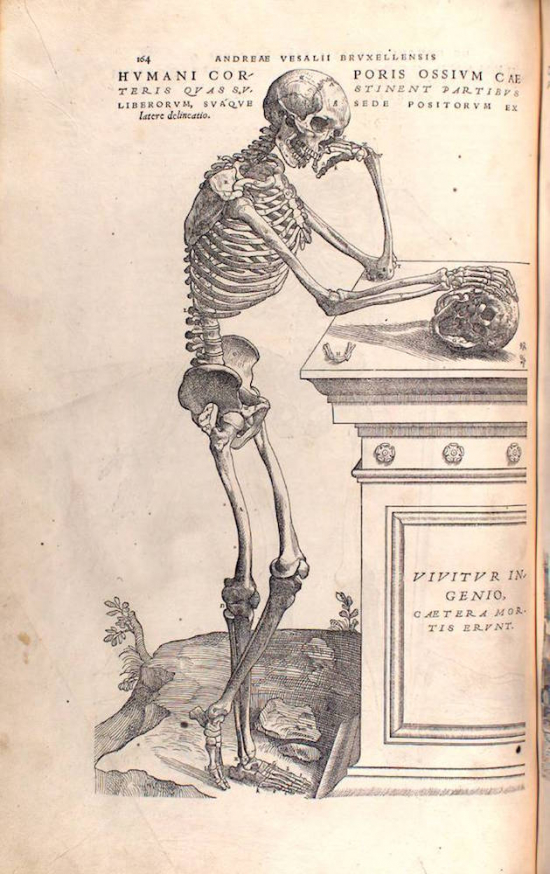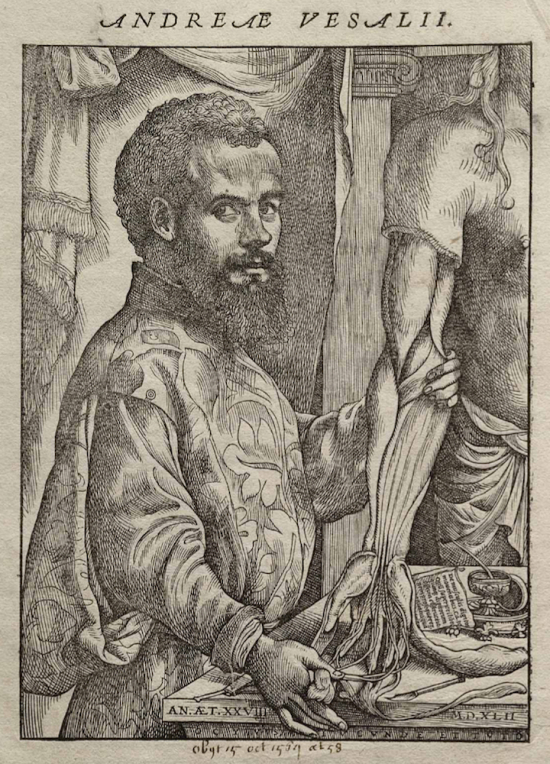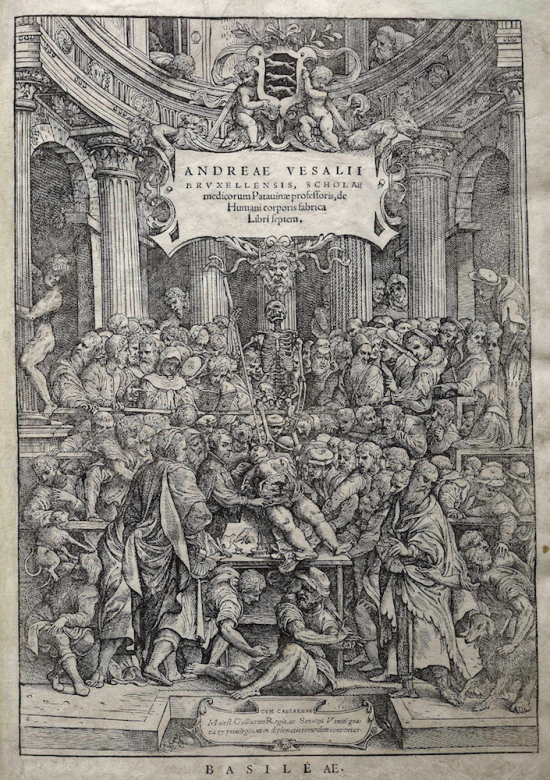On December 31st, as well as the coming of the new year, we should celebrate the anniversary of the birth of a scientist we are all very much indebted to: Andreas Vesalius.
You may have never heard of him, but this great Flemish anatomist was a sort of Galileo Galilei in the medical field, a scholar that was so stubborn he eventually fell out with the whole medical establishment of his time, a revolutionary that promoted the idea (preposterous and impertinent for his contemporaries) that science should be based on the observation of reality and not on words written by the classics a thousand years before.
Born in Brussels on December 31st 1514, Andreas van Wesel (for this was his real name) belonged to a family of three generations of court physicians. At the age of 19 he began to study anatomy in Paris and immediately proved intolerant of his professors’ methods. At that time, as a matter of fact, doctors did not usually get their hands dirty with dissections or surgical operations (which were left to barbers): great anatomists were rather cultivated intellectuals that spent their time philosophizing on the human body.
Vesalius, on the contrary, was tired of learning by heart what was written in books and wanted to see things with his own eyes. Therefore, together with other students, he started to pay regular visits to the Cemetery of Innocents in order to dig up bones and study them. He became so skilful that he could recognize a small human bone by touch, while he was blindfolded. At that time it was not easy at all to get real corpses to dissect: aspiring doctors used to note down the deadlines of public executions, or the names of the terminally ill in care at the hospital in order to be ready to unearth their corpses and study them. This macabre activity was not without dangers: Vesalius told that once he was locked out of the university, in the middle of the night and alone, after he had withdrawn a corpse from a scaffold; another time he was even attacked by a herd of wild dogs.
Nevertheless, his passion for dissections led Vesalius to discover that most of Galen’s theories, slavishly followed by physicians for 13 centuries, were unfounded. At that time, to criticize Galen was like confuting the Bible’s dogmas: and yet, during his post-mortem examinations, Vesalius went as far as to question those systems on which the entire medicine was based. Although he kept on cutting and dissecting corpses, he couldn’t find the slightest evidence of the mysterious “pneuma”, nor of the established “wonderful net” where “natural, animal and vital spirits” developed.
1543 was an explosive year: on the one hand Copernicus proved in his own treatise that “in the middle of everything stands the Sun”; on the other hand Vesalius published the De humani corporis fabrica in Basel. The text was accompanied by amazing anatomical plates made by the Flemish engraver Van Calcar, and even from the front page it was clear that the book was going to be contentious: the anatomist was represented while dissecting a corpse, instead of reciting classical texts. In his Fabrica Vesalius points out about 220 mistakes made by Galen, and advocates the importance of direct observation and objective data.
Galen’s supporters got furious and opposed Vesalius for the rest of his life. His ancient Professor, Jacobus Sylvius, did everything he could to tarnish his reputation by the Emperor, to the point of condemning dissection as an ungodly act: questioned about the topic, the theologians of the time denied the fact that it was against the doctrine, and praised its usefulness.
Vesalius died after a mysterious pilgrimage to the Holy Land, in 1564. It took plenty of time before the medicine’s know-alls really changed their mind, but the first step was taken. Nowadays Vesalius is still considered the father of modern anatomy.






